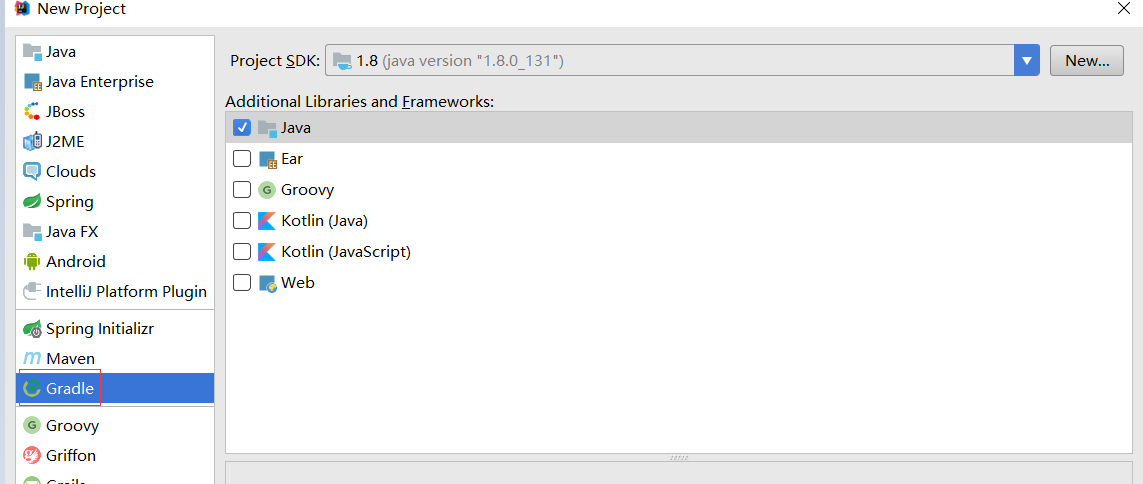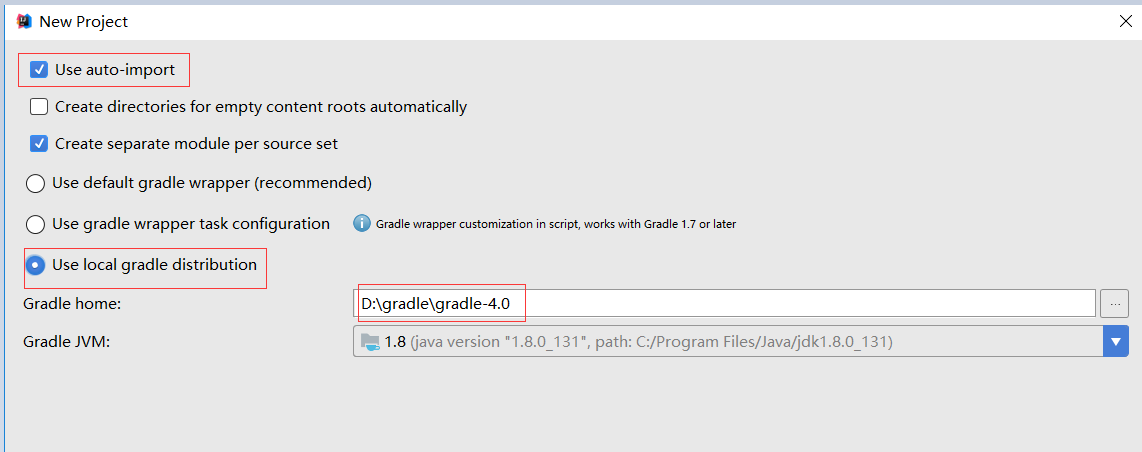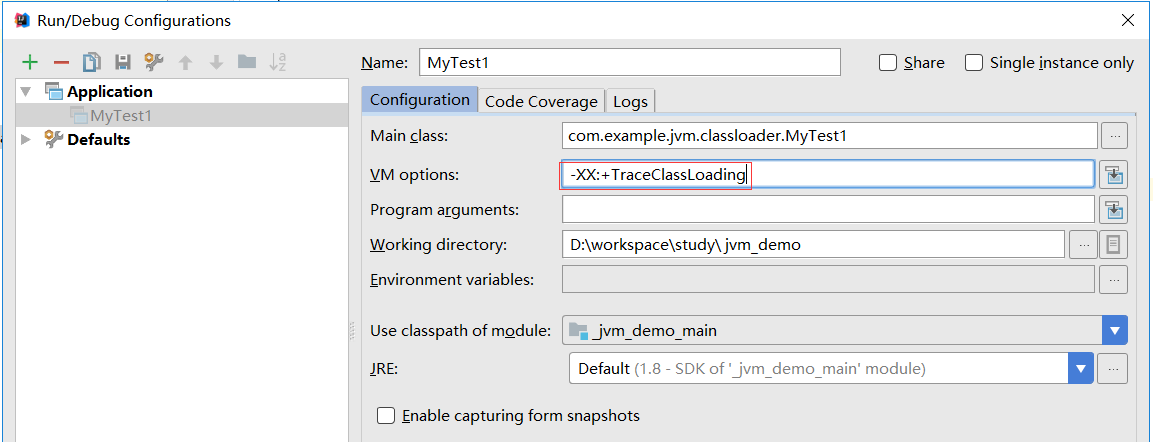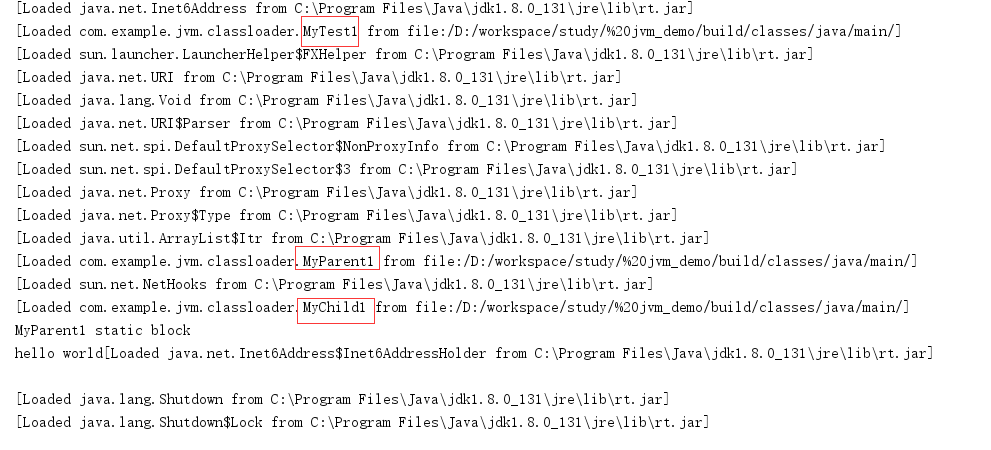主动使用和被动使用Demo
1、创建工程一个Gradle工程

下一步

下一步

点击完成
2、创建类
public class MyTest1 {
public static void main(String[] args) {
System.out.println(MyChild1.str);
}
}
class MyParent1{
public static String str = "hello world";
static {
System.out.println("MyParent1 static block");
}
}
class MyChild1 extends MyParent1{
static {
System.out.println("MyChild static block");
}
}
输出结果:
MyParent1 static block hello world
会发现MyChild1的类静态块没有执行。
总结:对于静态字段来说,只有直接定义了该字段的类才会被初始化。
修改后的类:
public class MyTest1 {
public static void main(String[] args) {
System.out.println(MyChild1.str2);
}
}
class MyParent1{
public static String str = "hello world";
static {
System.out.println("MyParent1 static block");
}
}
class MyChild1 extends MyParent1{
public static String str2 = "hello world 2";
static {
System.out.println("MyChild static block");
}
}
执行结果
MyParent1 static block MyChild static block hello world 2
因为使用到了MyChild的类,它会被初始化。当一个类在初始化时,要求其父类全部都已经初始化完毕。最终打印结果如上面所示。
3、上面1中,MyChild1没有被实例化,那MyChild类是否有被加载?
-XX:+TraceClassLoading, 用于追踪类的加载信息并打印出来
配置如下:

完整的代码
public class MyTest1 {
public static void main(String[] args) {
System.out.println(MyChild1.str);
}
}
class MyParent1{
public static String str = "hello world";
static {
System.out.println("MyParent1 static block");
}
}
class MyChild1 extends MyParent1{
public static String str2 = "hello world 2";
static {
System.out.println("MyChild static block");
}
}
打印的结果

说明MyChild类也会被加载, 最先加载的是MyTest1类
JVM参数
-XX:+<option>, 表示开启option选项
-XX:+<option> 表示关闭options选项
-XX:<option>=<value>, 表示将option选项的值设置为value
4、首次主动使用例子
public class MyTest4 {
public static void main(String[] args) {
MyParent4 myParent4 = new MyParent4();
System.out.println("-------------");
MyParent4 myParent5 = new MyParent4();
}
}
class MyParent4{
static {
System.out.println("MyParent4 static block");
}
打印结果:
MyParent4 static block -------------
说明在创建MyParent4 对象的时候,会初始化MyParent4, 但是第二次创建MyParent4的时候,就不会初始化MyParent4。所有只在主动首次使用才会初始化。